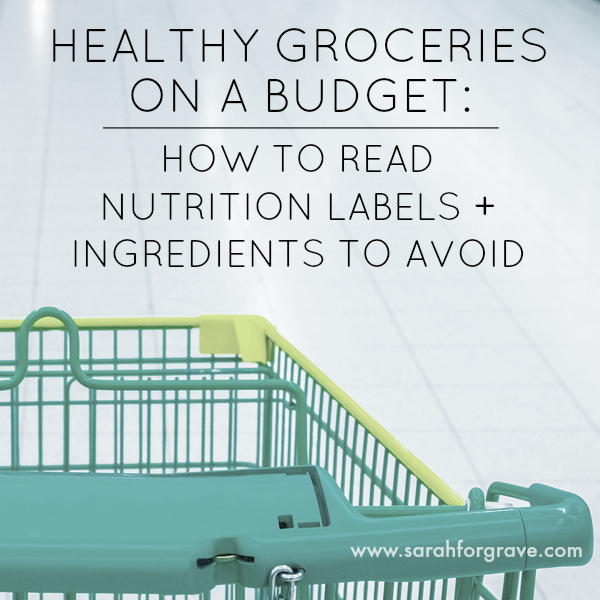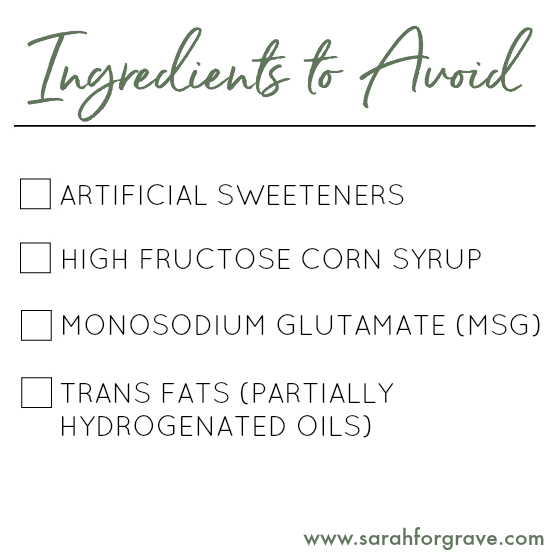Have you ever talked yourself out of a better diet because of the high cost of healthy food?
Same here!
As I’ve cleaned up my diet over the past several years, I’ve started to realize my grocery bills weren’t all that much higher. A little bit higher, but not as drastic as I would have expected.
So I decided to do an experiment. The question I tackled — Is it possible to eat healthy on the same budget I used to spend on unhealthy food?
As I conducted this experiment, I collected piles of grocery receipts and created Excel spreadsheets that would make your eyes blur five times over. I’ll spare you from all that fun… 🙂
In short, the answer to my question is YES! It is possible to eat healthy on the same budget you spend on junk food.
Over the next few weeks, I’ll be sharing how it’s possible, plus some tips to make it work for you.
First, though, I want to step back and talk about my parameters for a healthy grocery cart. I’ve had questions about this, and frankly I’ve been all over the board as I’ve educated myself through the process of converting my kitchen. Where I’ve settled is an approach that blends other people’s rules and tweaks them to fit my own life.
Generally speaking, I focus on choosing healthy foods that are closest to their natural state — vegetables, fruits, lean meats, etc.
This means my number one rule in reading nutrition labels is to skip the top section (other than glancing at total calories) and go straight to the ingredients list. What do I look for? I look for ingredients that fit within my overall goal — being as close to their natural state as possible. I also watch out for the worst ingredient offenders and avoid them at all costs.
For me, this list includes the following:
- Artificial sweeteners – I.e., aspartame and all its friends (found in diet sodas and a host of other sugar-free foods).
- High fructose corn syrup – Found in nearly everything, including most brands of ketchup.
- Monosodium glutamate (MSG) – Also found in a surprising variety of foods. MSG has been known to increase appetite. I definitely don’t need an extra reason to eat more calories! 🙂
- Trans fats – Nutrition label requirements are tricky here. Even if the top of the nutrition label says there are zero grams of trans fat, the food can still have trans fats in it. (Learn more in this article from 100 Days of Real Food.) The ingredients list will tell the real story – Anything with “partially hydrogenated” is a trans fat and is a no-go. A couple surprising sources of trans fats – Most mainstream peanut butters and instant oatmeal packs. Healthier options are available…You just have to be a meticulous label reader.
To learn more about these ingredients and others that I avoid if at all possible, I recommend the book, Unjunk Your Junk Food. The first three chapters are a must-read!
All right, let’s talk about one more thing. When it comes to healthy eating, we often wonder if we should buy organic or not bother at all.
I’m not an expert on this by any means, but I am the keeper of the checkbook in my house. For this reason, I choose to take a middle road. Frankly if my budget could afford a $6 gallon of organic milk each week, I would go for it. (Even though scientific research is all over the map in terms of pro- or anti-organic, I believe the nutrition in organic dairy and produce outweigh their non-organic counterparts.)
That said, for the sake of my family’s bank account, I’ve had to make some compromises. Whenever possible, I buy produce from the “Dirty Dozen” list in organic form. Outside of that, I allow some wiggle room based on availability and price.
I’ll get into more details about my produce strategy next week, plus share other ways I offset the cost of my healthy swaps. And for you number lovers, I might even throw in a few price comps too. 🙂
For now, I hope this post has helped you rethink how you read nutrition labels. Maybe you’ve never paid attention to the ingredients list because it’s too overwhelming and hard to understand. If nothing else, consider the ingredients I shared in this post. Do some research on their health effects and decide what your personal parameters might be. Then come back next week for more tips and ideas.
Happy label reading!
*grocery cart photo by Adisa/BigStock.com

